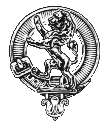|
|

|
|

|
Portrait of Francois Langlois By
Van Dyck (1599-1641)
Shuttle pipes are a type of bagpipe which derive their name from the type of drones used to
provide the harmony. Rather than the long tube-like drones which are employed by most bagpipes, the shuttle pipes use a shuttle
drone. Shuttle drones consist of a series of winding tubes enclosed in a wooden chamber. Each shuttle drone tube terminates
in hollowed-out groove which is partially covered by a slide or 'shuttle' . This shuttle is moved back and forth over the
groove, in effect lengthening or shortening the tube, thus flattening or sharpening the pitch.
|
| Like all other bagpipes, shuttle pipes have a chanter
which is used to play the melody. Shuttle pipes can be either mouth-blown or they may use a bellows to fill the bag. The French
Musette is a very famous type of bellows-blown shuttle pipe which reputedly played by King Louis XIV of France. A colorful
bagpiper with his Musette is depicted in the classic painting 'Portrait of Francois Langlois' by Van Dyck (1599-1641). |

|
 |
Shuttle pipes were very popular about 300-400
years ago, but as with almost all of the European forms of the bagpipe, they neared extinction. Fortunately, a new popularity
has brought this wonderful type of bagpipe back to the forefront.
Drawing from Michael Praetorius's
Syntagma musicum (Treatise of Music) of 1618. Used with permission of Author.
| |
|

